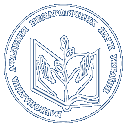- Горностай, П.П. (orcid.org/0000-0003-2327-6213) (2019) Group defence mechanisms as a response form to collective trauma Проблеми політичної психології, 8 (22). pp. 89-114. ISSN 2411-1449
|
Text
27-Текст статті-59-1-10-20200311.pdf Download (499kB) |
Abstract
The article attempts to investigate the group as a holistic actor and identify defence behaviour properties in case of a collective trauma. The assumptions derived from other theories justify the author's concept, and the theory of self-organized criticality in particular, when it comes to great intergroup conflicts inevitability. The emphases is made on the fact that each group, regardless of total members it consists of, seeks to protect and keep away from destruction the system of its own inner values and picture of the world. It is obvious the collective trauma jeopardizes the group values that can be destroyed. The study emphasises that any group implements a set of protective mechanisms to mitigate the trauma impact, however only a few can heal the trauma, while the majority only preserve a problem and can trigger them in subsequent generations. This gives proofs to transferring traumatic experiences between generations. The basic patterns of collective traumatization, reaction to a collective trauma and processing its consequences have been considered in this study. The study also stands up for the idea of collective traumas interaction between groups of different sizes: the trauma of a bigger group becomes the trauma for smaller subgroups, which actually make up the bigger group, though these groups are not always aware of this fact. The article marks such phenomenon happens quite often in the form of parallel processes. However, the smaller groups’ traumas do not always transfer over a larger group due to some protective and preventing mechanisms. This makes the ground to conclude that both parties receive traumas in intergroup conflicts, and these are both the victim and the aggressor. That is why only when both parties overcome the traumatization consequences, the positive managing these problems may come. The study offers examples of efficient social and psychological tools to process consequences of collective traumas. Among protective mechanisms used within collective trauma case, the sublimation tool becomes the most productive means to heal the whole group. Other protective mechanisms allow reducing the trauma experience intensity, though in the future they may become the source to trigger new conflicts and the collective traumas related to them.
| Item Type: | Article |
|---|---|
| Keywords: | collective trauma; group defence mechanism; group values; self-organized criticality; sociodrama. |
| Subjects: | Science and knowledge. Organization. Computer science. Information. Documentation. Librarianship. Institutions. Publications > 1 Philosophy. Psychology Science and knowledge. Organization. Computer science. Information. Documentation. Librarianship. Institutions. Publications > 3 Social Sciences > 314/316 Society > 316 Соціологія |
| Divisions: | The Institute of Social and Political Psychology > Laboratory for Psychology of Small Groups and Inter-Group Relations |
| Depositing User: | Професор Павло Петрович Горностай |
| Date Deposited: | 05 Apr 2023 09:53 |
| Last Modified: | 05 Apr 2023 09:53 |
| URI: | https://lib.iitta.gov.ua/id/eprint/734738 |
Downloads
Downloads per month over past year
Actions (login required)
 |
View Item |




